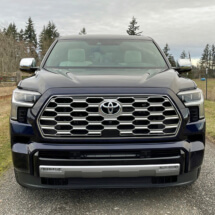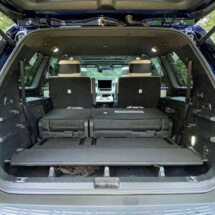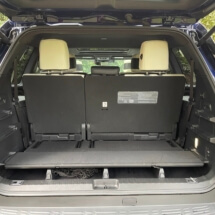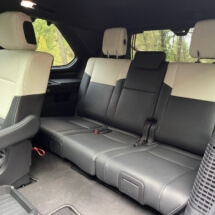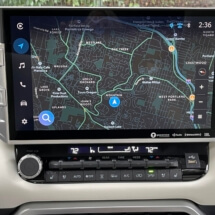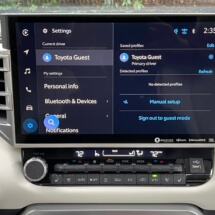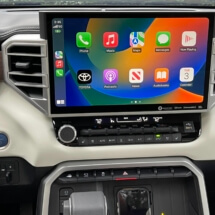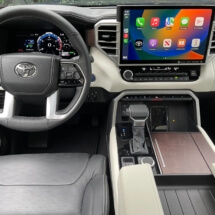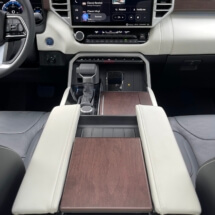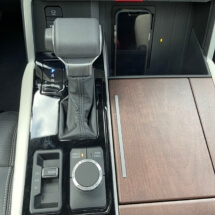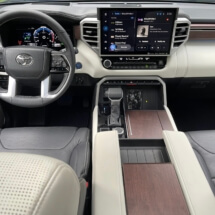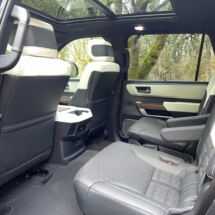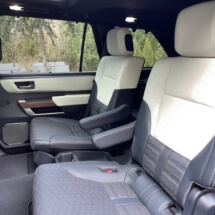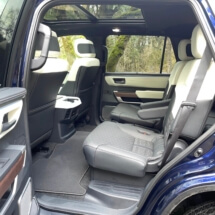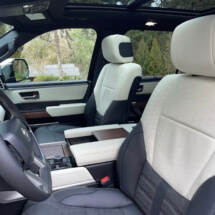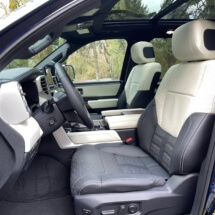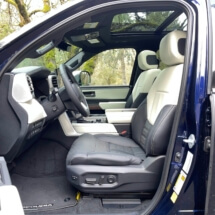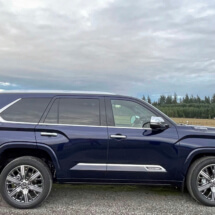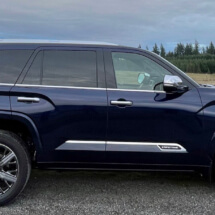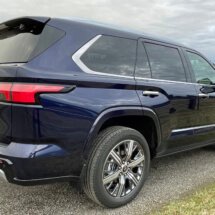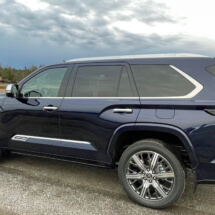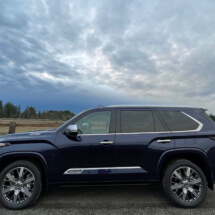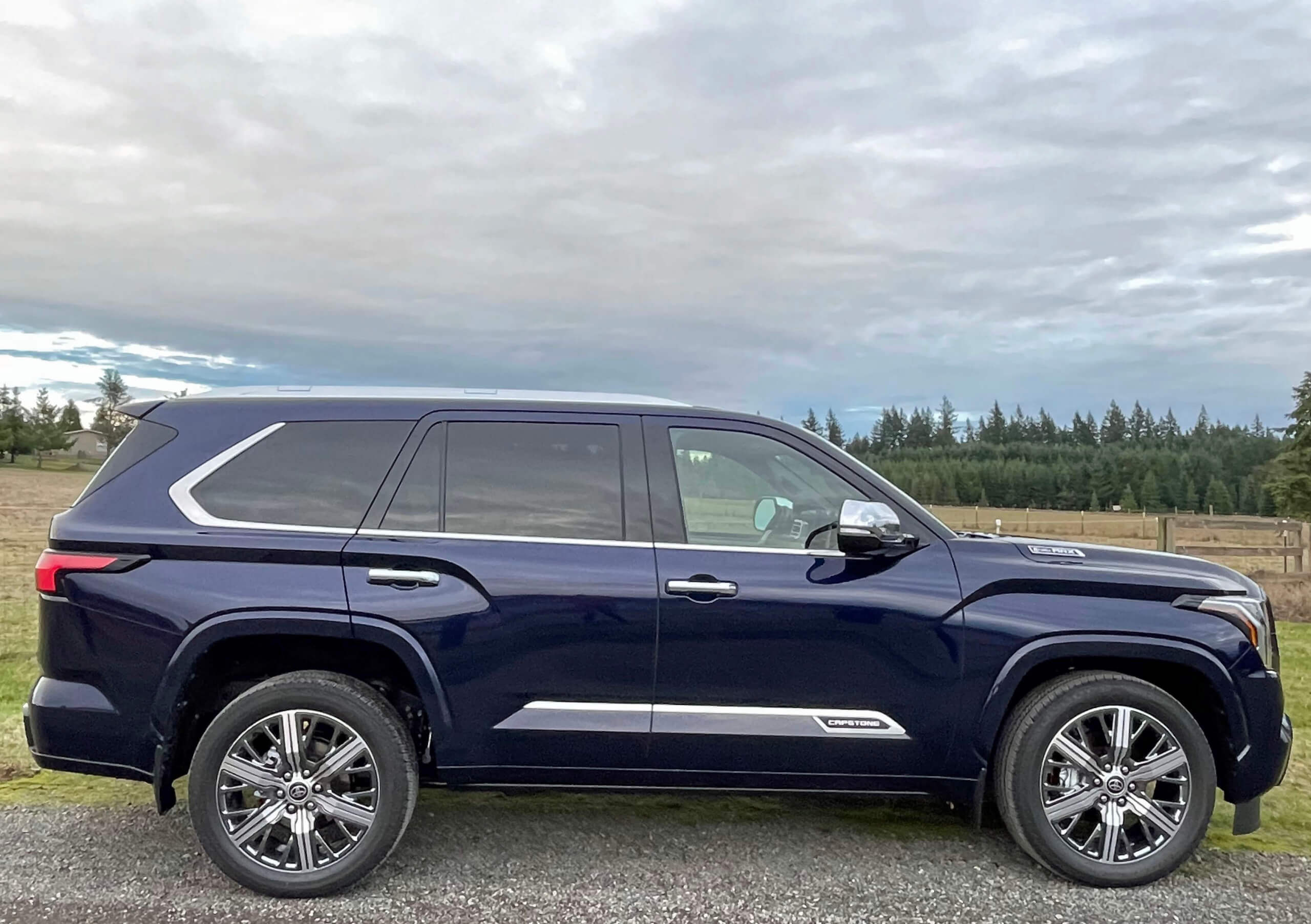
The Toyota Sequoia gets redesigned for the 2023 model year but remains a powerful, old-school body-on-frame SUV with room for up to eight passengers. Basically, it’s a tank with lots of family-friendly features. However, it has less cargo and passenger space than other large SUVs.
Base Price: $78,300
As Tested: $80,480
Horsepower: 437
Mileage: 19 mpg city/22 mpg highway/20 mpg combined
The 2023 Sequoia is only available as a hybrid. The new third generation gets exterior and interior styling tweaks and updated tech including a new infotainment system. The Sequoia was introduced for the 2001 model year, based on the Tundra pickup. It’s the largest SUV ever made by Toyota. SUV. Main competitors include the Chevrolet Suburban and Tahoe, Ford Expedition and Jeep Wagoneer.
The 2023 Toyota Sequoia comes in five trims: SR5, Limited, Platinum, the off-road oriented TRD Pro, and Capstone luxury trim that basically rivals the Lexus LX. The starting price of the SR5 is $58,300 which is high for a large SUV. My tester, the top-of-the-line Capstone, starts at $75,300.
There’s room for seven or eight passengers in three rows of seating, depending on whether you get the optional captain’s chairs in the second row. Rear-wheel drive is standard. Four-wheel drive is available on most, and standard on the off-road TRD Pro trim.
There’s one engine: Toyota’s new iForce MAX hybrid that consists of a twin-turbo 3.5-liter V6 engine, an electric motor and 1.87-kWh battery pack along with a 10-speed automatic transmission. Total output is 437 horsepower and 583 pound-feet of torque. These numbers are impressive on paper and also in real life. Acceleration is brisk and the powerplant does a great job of propelling this three-ton SUV down the road. Getting up to speed to merge or pass on the freeway is effortless. This same set up is also available in the Tundra pickup.
While there’s more than enough power for just about every driving scenario, the Sequoia is a very large vehicle and drives like one. It handles more like a truck than many pickups do. The Sequoia is wide so you sometimes feel like it’s too easy to drift out of your lane. And getting in and out of tight parking spaces is a challenge. The steering is very light – it would be nice to have a more weighted feel. And there’s noticeable body lean when cornering. On the plus side, brakes are strong and the ride is extremely smooth – like driving on a cloud. Visibility is good to the front and sides but limited to the rear.
Fuel economy is better than the outgoing model, thanks to the hybrid powerplant. However, real world mileage may not be so good. EPA ratings for my tester are 19 mpg city and 22 mpg highway with a combined rating of 20. I got only 17 mpg during my week with a mix of city and highway driving.
The Sequoia can handle some off-roading, especially the TRD Pro trim, but it’s not as capable as the Toyota 4Runner.
When properly equipped, the Sequoia can tow 8,980 to 9,520 pounds. This is more than most other full-size SUVs.
The cabin is attractive, and goes from nice to luxurious as you move from the lower to upper trims, at least in the two front rows. The third row has lots of hard plastics. Front seats are roomy and supportive. Seats in the second row have decent leg room, but taller passengers may wish for more headroom, especially in models with the optional panoramic sunroof. The third row is more cramped than what you’d typically find in a full-size SUV and is really only suitable for kids. The cabin is very quiet with engine, road and wind noise kept at bay.
Standard features include proximity keyless entry, push-button start, surround-view camera system, tri-zone automatic climate control, cloth upholstery, heated front seats, 12.3-inch digital instrument cluster, infotainment system with eight-inch touchscreen, navigation, eight-speaker audio system, satellite radio, Bluetooth, Android Auto, Apple CarPlay, many USB ports, Wi-Fi, automatic high-beam headlights, and a moonroof.
Available features include a rearview mirror with integrated camera display, a head-up display, synthetic leather upholstery, real leather upholstery, heated steering wheel, ventilated front seats, heated and ventilated second-row seats, power-folding third row, infotainment system with 14-inch touchscreen, 14-speaker audio system, wireless device charging, a 120-volt household-style power outlet, rear sunshades, and a panoramic sunroof.
Standard driver assistance technologies include forward collision warning with pedestrian and cyclist detection, forward automatic emergency braking, adaptive cruise control with lane centering, blind-spot monitoring with rear cross-traffic alert, lane-departure warning with lane-keep assist, traffic-sign recognition, front and rear parking sensors, and fear-seat alert (reminds you to check the back seats for kids or pets before you exit the vehicle).
The old seven-inch infotainment system was showing its age. Now the Sequoia comes with the latest software, and a huge 14-inch touchscreen is standard on all trims except the base SR5 which comes standard with an eight-inch touchscreen and the option of upgrading to the 14-inch touchscreen. The large font is easy to see, and menus are logically arranged. But the system is cloud-based so you’ll need a data connection. Physical controls are handy for things like volume and climate.
The Sequoia has much less cargo space than other large SUVs. With all three rows of seats in place, there are only 12 cubic feet. That grows to 49 cubes with the third row folded, and 89 cubes with both rows down. The third row doesn’t fold flat so there’s a shelf-like part of the cargo floor when you put the third row down. This is due to the hybrid’s battery pack and a rear axle under the third row. While the cargo shelf can be raised or lowered to make a flat loading space, it makes for a high liftover height.
The good:
Powerful and more fuel-efficient hybrid powertrain
Cushy and quiet Lexus-like ride
Upscale cabin and downright luxurious in the top Capstone trim
Lots of standard and available features and tech
Standard Android Auto and Apple CarPlay
The not-so-good:
Drives like a truck
Fuel economy still not great
Limited headroom in second and third rows
Cargo space is reduced as third row doesn’t fold flat
Pricing info:
My tester starts at $78,300. The dash cam is $499. The ball mount is $87. Delivery fee is $1,595 bringing the grand total to $80,481.
Bottom line:
The 2023 Toyota Sequoia is much better than the outgoing model with its powerful hybrid powertrain, smooth ride and upscale cabin. However, it has some quirks including truck-like handling, less than optimum cargo space, a tight third row and disappointing fuel economy. Still, shoppers wanting a large, truck-like SUV should check it out.


